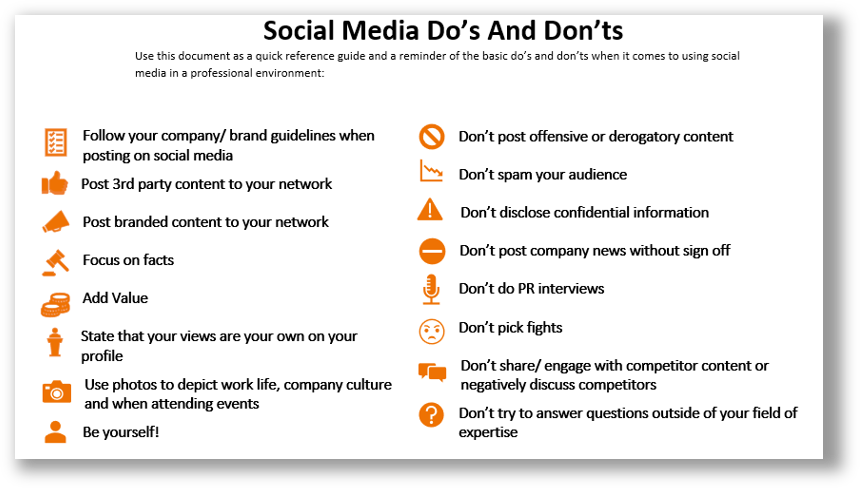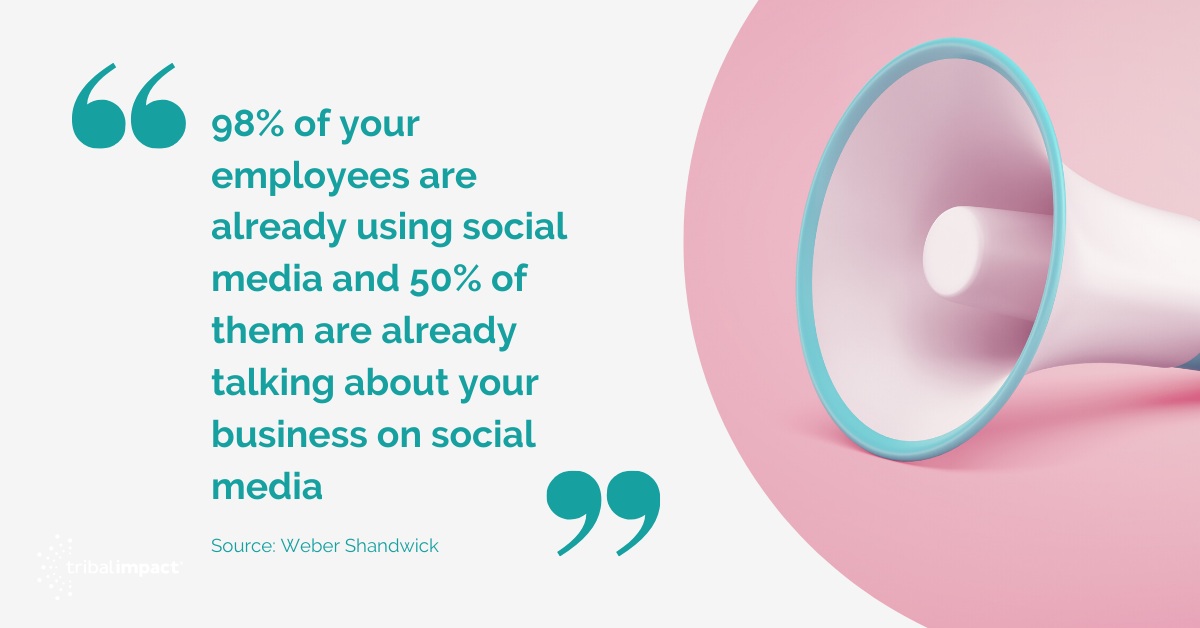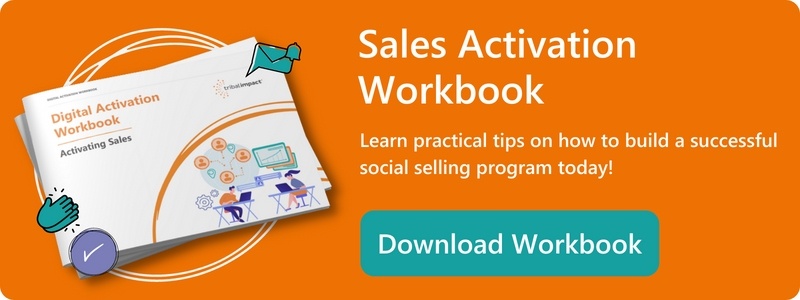Activating your employees on social media can be a tricky undertaking. The reality is 98% of your employees are already using social media and 50% of them are already talking about your business on social media (Weber Shandwick).
The first step to embracing advocacy is recognising the fact that, whether you like it or not, your employees are already social. It’s less about motivating them to use social media and more about building confidence to use it appropriately at work.
This is where internal communications can massively impact your program. This includes communicating the ‘what’s in it for me’ to employees, building a crisis confident culture and mitigating social media risks before they happen. Here are the ways internal communications can activate a social savvy workforce.
Create A Social Media Policy That’s Easy To Understand
The problem with social media policies is that they were often written years ago and then posted somewhere on the intranet where no-one can find them. They’re often several pages long and written in a language only a compliance officer can understand.
Your social media policy should be summarised in no more than 2 pages, written in a language that is simple to understand and include examples that illustrate the points you’re trying to make. Make it memorable, visually appealing and something they can use to reference back on. Finally, make it clear who employees should contact should they see something on social media that needs reporting.
We've created a downloadable social media policy pack which contains a template for creating your own policy, as well as a 'quick reference guide' to remind employees of the basic 'do's and don'ts' of using social media.

Provide Social Media Guidelines That Illustrate Examples
Rules are great but more often than not, they’re focused on the negative ‘don’ts’ rather than the positive ‘do’s’. Typically written in a legal language, employees become terrified of saying anything on social media which means that you might be missing an opportunity.
Create a set of guidelines that help your employees to thrive on social media. Help them to understand what good looks like. Use examples of good content sharing versus not so good. Provide an overview of the different social media channels so they know their Twitter from their LinkedIn. Provide guidance around frequency and timing of content sharing for maximum impact.
Review Your Enterprise Social Network (ESN) Data To Find Early Adopters
You may not realise it, but you’re probably sat on a wealth of behaviour insights already. If your company uses Slack, Yammer, SAP Jam, Jive or another ESN your employees are already experiencing community platforms without realising. Whilst they’re not actively tweeting on Twitter or posting on LinkedIn, they already understand the principle of transparent conversation and engagement.
Depending on workers council rules, the first place to review is the analytics of your ESN platform. You’ll identify your vocal and active employees quite easily. The ones that are your community builders and internal influencers. These are likely to be your advocacy early adopters and advocates to other employees. Discover who they are and build them into your plan.

Communicate Your Advocacy Program Across Your Company
When employee advocacy programs are led by marketing or sales, they often try to launch to everyone. The focus is on speed to launch, reach of audience and volume of content. But with advocacy you’re treading a very fine line. One that is asking employees to associate their personal brand to that of the company’s brand. It’s complex.
If anyone knows how to communicate programs and messages to employees, it’s the internal communications team. They will have a network of communication tools ready to activate from digital signage and internal posters to intranet ticker bars and employee email lists. They’ll know how to craft a message with employees in mind. Engage your communications team to get your program off the ground.
Stage Your Advocacy Member Permissions To Internal Only
Most advocacy tools will allow you to allocate different roles including admins, category managers, members etc. However, when it comes to members most organisations will allow their employees to access and share immediately with very little guidance or training. This can quickly cause you a few headaches including employees over sharing, not sharing content aligned to their personal brand or not sharing at all!
Most advocacy tools will allow you to stage your permissions for members. This allows employees to join the platform with as browsers and engages meaning they can engage with the content in the platform but not share it externally. Once you review the platform data, you can quickly identify your program’s most ‘engaged’ members, target your training efforts at them and quickly accelerate their access levels to allow external sharing.
In summary, internal communications are a key partner (if not the lead partner) to launching an employee advocacy program. Working with employee brands is a sensitive and complex topic. Unless you understand the intricacies involved in the process of engaging, communicating and motivating employees, your advocacy program will have limited impact. Learn more about how Zurich internal communications managed their advocacy launch in our webinar.

